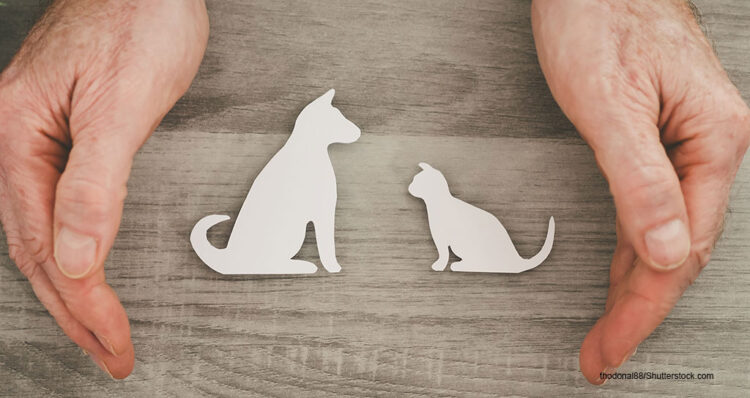The Guardian recently published a story about Oreo – a playful mid-aged dog. Oreo got ill and was put to sleep because her owners couldn’t cover her medical bills. As a pet parent, the sad story about Oreo brings to mind two realities: your fur baby’s health is unpredictable, and pet treatment could be expensive. Pet treatment could be so out of reach that you might opt to save your wallet over your pet’s life. But it does not have to be that way.
About forty years ago, a couple of vets felt the plight of pet parents. They came up with pet insurance. It was an equivalent of the typical health insurance or a home insurance plan. But the target was companion animals. The objective was to help pet parents manage their fur babies’ urgent health needs without worrying about the bills. Today, pet insurance is big, and there are big players in the market covering a variety of animals.
Are you hesitant about getting coverage for your pet? Read on and see why pet insurance is worth it.
Photo by Daria Nepriakhina on Unsplash
Page Contents
A sad case of rising economic euthanasia

Source: forbes.com
Many pet parents across the country are like Oreo’s owners. They have had to make the ultimate sacrifice. One report cited a vet clinic in Fredericksburg, Va., where two out of three animals euthanized weekly were because of economic reasons. The report further asserts that the rate of economic euthanasia was rapidly increasing (by 10-12%).
For a country where people consider pets as members of the family, this is heartbreaking. But, you don’t have to come to such a hard decision when dealing with emergency healthcare for your pet. You can plan for it. You might face some hurdles.
Pet insurance is the best safety net
Experts estimate that one in three pets requires emergency medical care each year. Accidents are the most common reason for emergencies. Your dog could swallow a dangerous object, or your cat could suffer fractures due to leaps from high spots. Certain breeds are prone to different illnesses, too. For example, if you have a German Shepherd, they are prone to developing hip dysplasia – so it’s worth checking out sites like InsuranceProviders.com for specialist cover.
The average cost for unexpected medical care for your fur baby can range from $800 to $1,500 or more.
You could consider setting up an emergency fund. But that could take years to build, and it could be depleted after a few visits to the vet. In a nation where the credit card is king, saving for emergencies is hard. In fact, Less than a third of pet owners have sufficient emergency savings to cover such an emergency. Many pet parents opt to sink deeper into debt to cover the vet fee when there is an urgent need for the pet’s medical care. If there is a need for extensive treatment or the pet’s health deteriorates, you could slide into a debt trap.
But that would not be the case for pet parents who have coverage for their fur babies. Pet insurance is the safety net that would save you and your fur baby from going down that spiral.
What does pet insurance cover?

Source: todaysveterinarybusiness.com
Pet insurance is like health coverage for yourself and your family members but with a few twists. Most pet insurance policies operate on a reimbursement model. You can find out more about that here. That is, you pay first, then claim for reimbursement from the insurer. There are three main types of coverage options:
- Accident-only coverage. It covers any sudden physical injury. It includes treatment of broken bones, shattered ligaments, bite wounds, and other urgent health needs. Such policies are affordable and could be an excellent starting point for skeptical owners who want to test the waters.
- Accident and illness coverage. This type of policy covers health issues listed in the accident-only plans and common illnesses like influenza and other viral infections, ear infections, heartworm treatment, canine distemper, and many more. The policy could also cover non-communicable health issues like allergies, cancer, arthritis, and many more. At $48.78 for dogs and $29.16 for cats, the average monthly cost for a decent accident and illness coverage is within reach for most Americans. However, as the pet grows older, the cost increases, and exemptions for pre-existing conditions are introduced.
Thus it is essential to get pet insurance while your fur baby is still young. - Wellness policy entails coverage for wellness expenses such as routine vet visits and procedures. Many pet insurance companies feature it as an add-on. It helps pet parents avoid making out-of-pocket payments on every vet visit.
The benefits of pet insurance
The most significant benefit of pet insurance is to help pet parents make better decisions concerning their pet’s health. When your fur baby falls ill or is injured, you will not think about your wallet. Decisions will focus on his well-being, not your economic situation. There are many other benefits of getting coverage for your pet, and they include:
Photo by Markus Winkler on Unsplash
You have more choice

Source: todaysveterinarybusiness.com
Since most policies operate on a reimbursement model, you can choose the vet to visit. You are not constrained to low-cost vet clinics nor restricted to a particular network.
It saves you money
According to Value Penguin, the average pet insurance premium for a healthy and young dog could cost $25 to $70 per month. For cats, it ranges from $10 to $40 per month. When you compare it against the cost of a single vet visit, there is no doubt that pet insurance is worth it. Plus, you can lower the premium by increasing the deductibles.
A final word, get your pet covered
Your pet is an important family member. Treat him as such. Look for suitable pet insurance coverage and sign him up. It may cost you a couple of bucks, but it is worth every penny.
Not only will you make better decisions concerning your pet’s health, but you will also save money.
Finding the right insurance for popular companion animals like dogs might be easy. However, if you have an exotic pet, you may have to do a little more digging. But you can still find decent coverage. Don’t gamble with the health of your fur baby; insure it instead.





